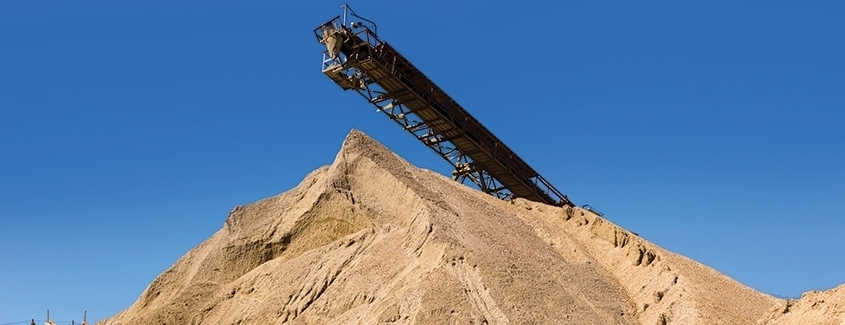When it comes to heavy industrial work and extraction services, the safety of your workers is paramount. It’s vital that you take every step possible to reduce the risk of injury or issues in the workplace, and limit your exposure to possible worker compensation claims for employees extracting sand, gravel, and similar materials.
We’ll start by looking at the data before sharing some common sense best practices for making all of your work sites and people safe.
Information on the sand and gravel industry
- There are currently between 6,000 and 6,500 sand and gravel operations throughout the US, according to 2013 figures.
- Most operations have fewer than 25 employees and only 7 or 8 counties through the US have operations with more than 200 employees.
- There are very few fatalities across the sand and gravel extraction industry as a whole, with a total of 43 reported between 2003 and 2013 (just over 4 a year on average).
- There are a fair number of nonfatal injuries — Between 2009 and 2013, there were an average of 370 injuries a year, affecting an average of around 1.6% of employees.
- The most common types of injury for sand and gravel workers, in order, are:
o Handling materials — 35%
o Slip or fall — 29%
o Use of hand tools — 12%
o Powered haulage — 9%
o Machinery — 7%
o Other — 8%
If you want to reduce the risk of injury, and by extension your exposure to worker compensation, you need to make sure you have best-in-class training, safety equipment, working environments, and policies to reduce and prevent injuries.
Creating a safe work environment for sand and gravel employees
We recommend the following when you’re creating and reviewing your safety procedures.
Get a complete, independent audit of your existing safety practices
Have an independent organization come in to examine and report on how you currently operate, with a strong focus on safety. They will produce a detailed report highlighting any gaps in any aspects of your safety processes and policies.
Get very clear safety policies and processes in place and rigorously enforce them
Good health and safety starts with strong policies. Review all of your existing health and safety practices and ensure they’re reflected in the policies you share with employees. Provide plenty of practical examples and context for your policies so your employees can understand how they work in practice. In particular, you need to ensure every employee is responsible for their own health and safety.
Provide the right training on best practices and ways of working
Make sure you have an in depth onboarding and ongoing training program on health and safety for all employees. Ensure the training covers every aspect of your health and safety policies, using equipment safely, operational expectations and an awareness of the health of yourself and others.
Invest in equipment and tools that minimize the risk of injuries
- Provide protective clothing to your workers
- Ensure they use equipment and tools designed to minimize the risk of injury. This could include highly visible haulage machinery, hand tools designed with protectors, footwear that allows sure footing, gloves to make material handling safer, and a variety of other areas.
- Inspect equipment and tools regularly for deterioration and replace anything that isn’t up to standards.
Make it everyone’s responsibility to report potential issues
You want your workers to be aware of their environment and any potential hazards that could affect them and their colleagues. Make it easy to report potential threats and ensure everyone knows it’s their responsibility to do so.
React to potential hazards quickly and ensure they’re fixed
Give a member of your staff accountability and responsibility for monitoring and fixing reported hazards. Measure how long it takes them to do so and use this to design better systems for identifying and fixing problems.
Make sure the environment remains as safe as possible
- Clearly mark potentially unsafe areas (e.g. loose ground.)
- Put proper fencing and barriers in place to keep people away from danger.
- Make sure you control for dust pollution and storing of materials.
- In times of severe weather, make sure you have proper processes in place to minimize risk (e.g. when people are working in slippery and wet environments.)
- Keep landslides of sand and gravel to a minimum by regulating the size and location of materials storage.
- Have rigorous safety controls around all blasting and explosives handling and use.
Taken together, all of these suggestions can make your site a much safer place to work, maintains the health and safety of your people, and makes sure you don’t fall afoul of worker compensation.
Joe Pinto
Risk Management Consultant
jpinto@srfm.com


